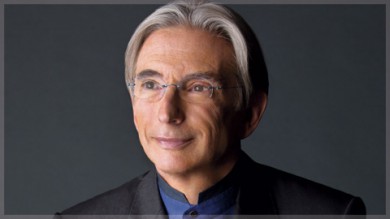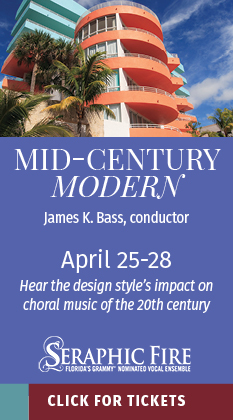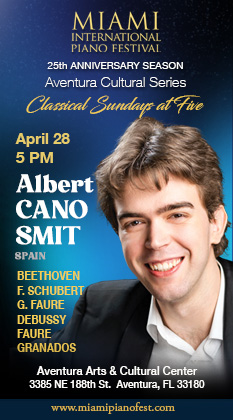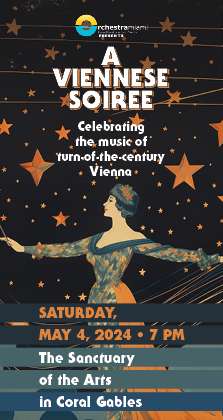MTT, soloists and New World deliver memorable Mahler

Michael Tilson Thomas conducted the New World Symphony in music of Mahler and John Cage Saturday night.
Gustav Mahler’s Das Lied von der Erde (The Song of the Earth) came to ecstatic, nightmarish life Saturday at a concert by the New World Symphony, a performance that will surely rank with the best of a rich musical season.
New World founder Michael Tilson Thomas’s survey of Mahler’s symphonic works finally brought him to the Austrian composer’s song cycle, a work Mahler refused to call a ninth symphony for fear of sharing the fate of Beethoven, Schubert and Bruckner, who died before they could complete a tenth.
The work sets ancient Chinese poems that had been published in German translation. They tell of the joys, pangs and loneliness of life, the pleasures of wine and the ever-present shadow of death, with the underlying message of the persistence of the cycles of life, death and the earth.
For this performance at New World Center in Miami Beach, the orchestra brought in two first-rate singers, the mezzo-soprano Sasha Cooke and the tenor Simon O’Neill.
From the first words, in which O’Neill’s voice cut through the fortissimo orchestra, it was clear why this singer is tapped for heldentenor roles like Siegmund in Wagner’s Die Walküre. His projection over the surging orchestra wasn’t effortless, and that was part of its effectiveness–his muscular straining produced a tone that was rich, brilliant and pinging, with phrasing and pronunciation that brought out the desperate, death-shadowed exuberance of the text and music.
O’Neill produced shining, operatic high notes. His intoning of the repeated phrase “Dunkel ist das Leben, ist der Tod” (“Dark is life, dark is death.”) was grim and luminous at once. In the passage in which he describes the ghastly image of a howling ape crouching among gravestones, he achieved a tone of almost terrifying force. In the song “The Drunkard in Spring,” he projected a sense of staggering, inebriated eloquence.
While O’Neill played the role of the drunken poet, Cooke brought a quieter eloquence to the performance, with a grave but rich tone that perfectly fit the music. In “The Lonely One in Autumn” she sang with somber eloquence, achieving great expressiveness and pathos as she sang the words “Long do I weep in my loneliness.”
Cooke took the biggest part in the performance, singing the final song, “Der Abschied” (The Farewell), which itself accounts for half the length of the entire work. If this concert was one of the best of the season, her singing of the last few minutes of this work was the most memorable part. Cooke expressed quiet ecstasy, sadness, joy and loss all at once, as the vast work faded away, singing the final words “Ewig…Ewig” (Always, always…) in a manner that captivated the audience, which allowed a long moment of silence before the applause and cheers began.
Under Tilson Thomas’ baton, the orchestra gave a dramatic and finely paced performance. The long orchestral passage in “The Farewell,” came off as particularly monumental, stately and unhurried, with the natural flow and power of a great river on its slow and unstoppable course.
Mahler had a particular gift for writing for violins, with a keen sense of the instrument’s possibilities and a unique tone that marked every measure as unmistakably his own. New World’s violinists captured all the fragility and vulnerability of his violin passages, with transparent grace and urgency. In the song “Of Beauty,” as Cooke sang of young men trotting by on horses, one of them trampling the flowers, the brass played with a refined violence, assertive and resonant but never raucous or raw.
The concert opened with John Cage’s The Seasons, a ballet score composed for Merce Cunningham. Nearly a quarter century after his death, Cage remains controversial. He is notorious for his 4’33”, a work that consisted of four minutes and 33 seconds of silence (helpfully divided into three movements) and for using the sounds of radios, vegetable chopping and “prepared” pianos packed with things like nails and rubber bands.
But there is none of that in this 1947 ballet. The Seasons is Cage at his most traditional, with no strange instruments or sounds, just the skillful use of the orchestra to bring the sounds and sensibilities of an Indian conception of nature into the concert hall.
Appropriately for a work composed to accompany ballet, New World commissioned a video, done by Clyde Scott to a conception of Tilson Thomas. The videos consisted of close ups of the hands of a flute player or bassoonist, abstract shapes and intertwining ribbons of what appeared to be green leaves weaving around the screen. Lighting by Luke Kritzek changed with the seasons, a polar blue for winter, a harsh red for the destruction brought by fall.
New World’s video experiments, projected onto curvy screens above the stage, have produced mixed results at best, with many not strong enough to stand with the world-class music produced by the orchestra. This one worked better than most, possibly because the music itself was more atmospheric than dramatic, without a strong sense of narrative from which visual elements would distract.
The orchestra brought a lustrous tone to the tension-filled music, where the slow-moving changes of the seasons seemed to take place below the surface. The interplay of strings and flute recalled Debussy. And after all the rustling softness of nature, the arrival of the destruction of fall, with violent tones from the brass, came as an explosive release. Throughout the work, there was a tactile pleasure in the sounds of the orchestra that many wouldn’t associate with the man who stuffed nuts and bolts into pianos.
The New World Symphony will repeat the program 2 p.m. Sunday at New World Center in Miami Beach. nws.edu; 305-673-3331.
Posted in Performances
One Response to “MTT, soloists and New World deliver memorable Mahler”
Leave a Comment
Sun Apr 24, 2016
at 12:29 pm
1 Comment







Posted Apr 26, 2016 at 8:53 am by Peter
beautifully written review.